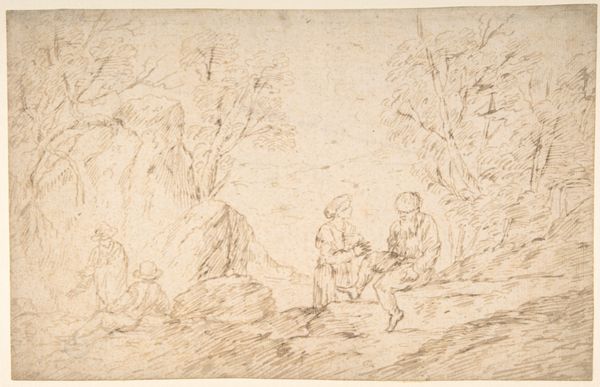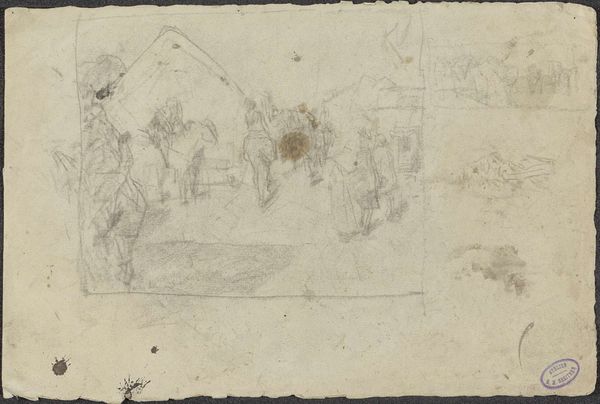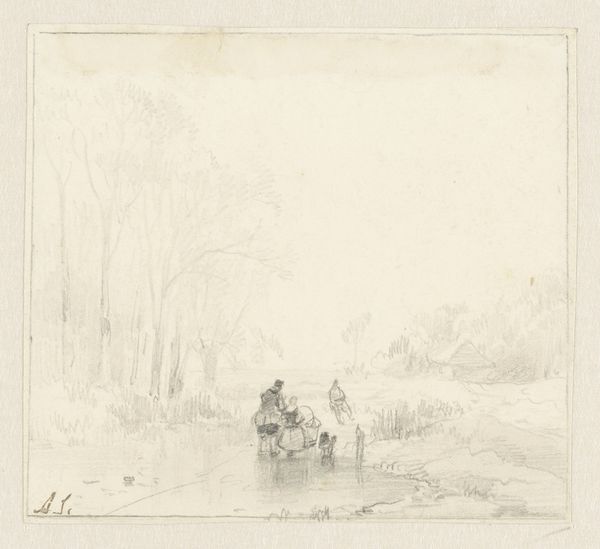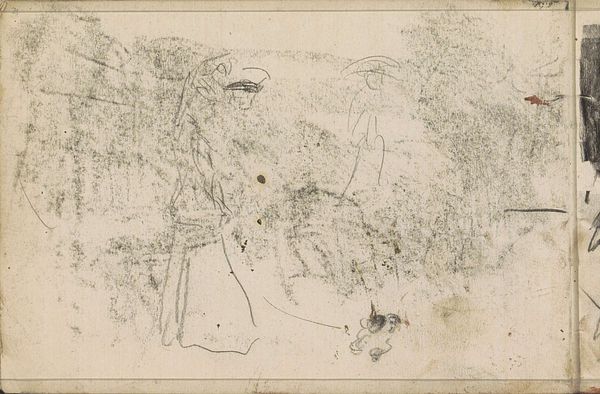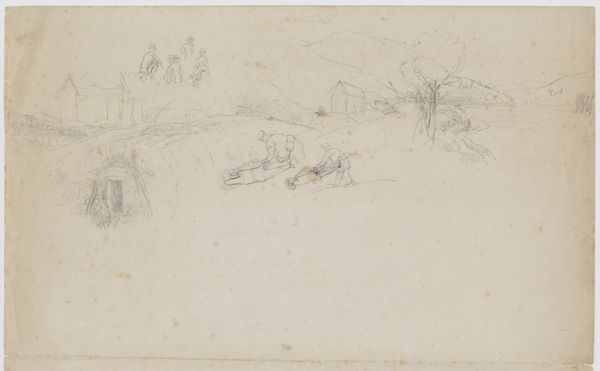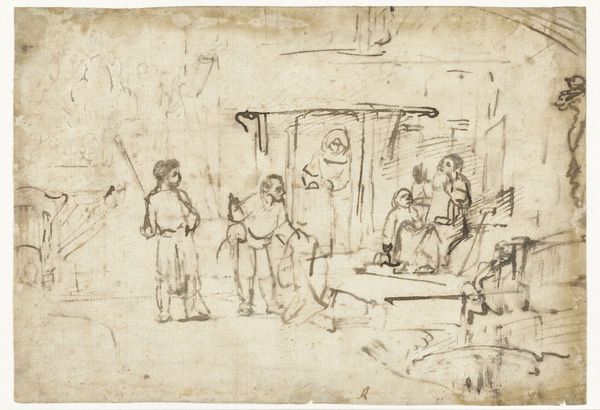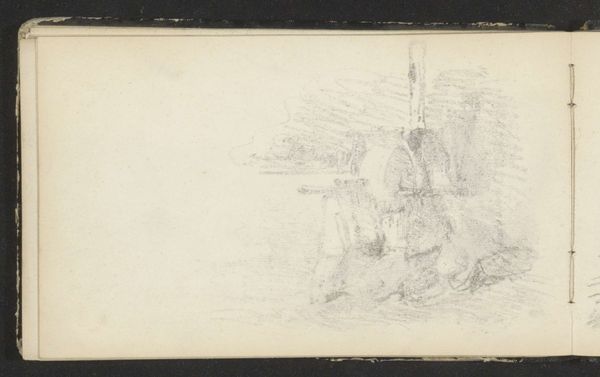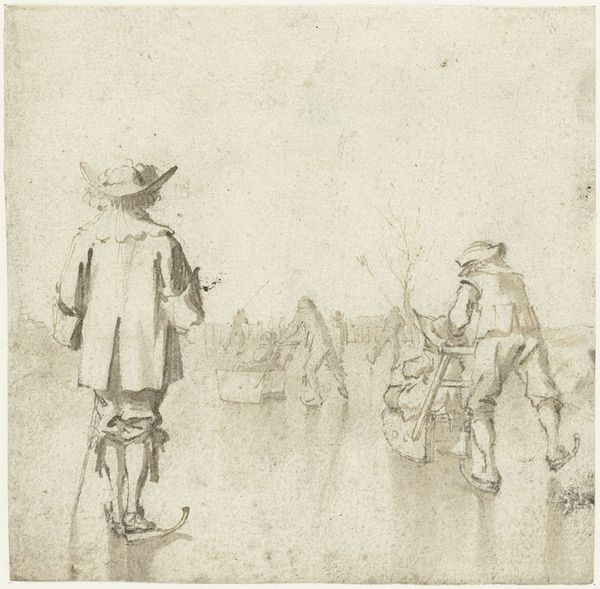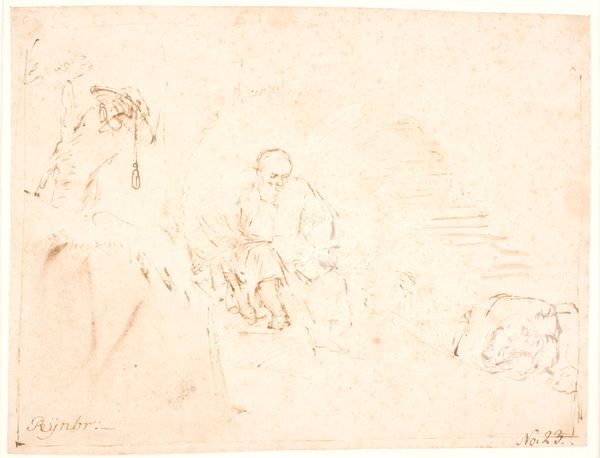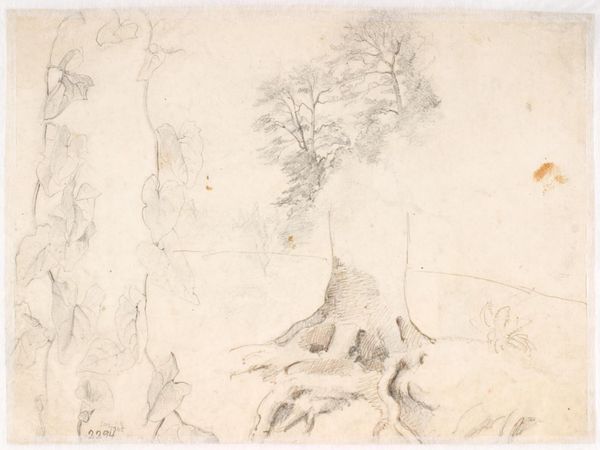
drawing, ink, pencil, pen
#
drawing
#
baroque
#
pencil sketch
#
landscape
#
etching
#
ink
#
pen-ink sketch
#
pencil
#
pen
#
genre-painting
#
watercolor
Dimensions: height 169 mm, width 229 mm
Copyright: Rijks Museum: Open Domain
Curator: So, here we have Willem Drost's "Group of Figures at a Table in the Garden of a Tavern," likely created sometime between 1650 and 1655. It's a pen, pencil and ink drawing. Editor: Immediately, I get this sense of a casual, perhaps even hazy afternoon. A gathering unfolding in the background as though the world outside simply melted away. The sketch-like quality reinforces that feeling of immediacy and the unplanned, capturing the charm of just hanging out. Curator: Genre paintings and drawings of this era often provide us glimpses into the daily lives and social customs. This one presents a snapshot of tavern culture. Tavern gatherings were socially significant events and venues, more than just sites of leisure and libation. Editor: Right, like a public stage, revealing hierarchies but also opportunities for common exchange and bonding. This makes me consider: are the characters at ease, tense, or plotting something under those sketchy hats? I mean look at that shadowy tree on the right. What's that all about? Curator: The artist certainly had an interest in depicting scenes of social interaction, which might reveal aspects of daily life in a relatively accessible and unassuming way. These were important public arenas. Editor: Well, its appeal now relies less on the scene itself and more on the energy captured through the drawing. Drost focused on expression in his line work. Curator: And while Drost seems deeply entrenched in the stylistic traits of the Baroque period, his intimate tavern scene touches on themes that were quite popular in 17th-century Dutch art. It’s almost documentary, revealing what places people visited and what activities preoccupied their leisure time. Editor: Indeed, the light touch hints at deeper meaning while the unrefined method leaves more room for imagination, as if this moment were only partly understood by Drost himself. So in the end it asks less about a particular culture than it reflects on shared experiences in public space, but it's filtered through the sensitivity of line, tone and suggestive placement. Curator: Absolutely. The politics of art hinges greatly on audience interpretation over time, as culture shifts to influence viewers in previously unforeseen ways. This lively garden suddenly speaks volumes beyond its intended meaning. Editor: And I was totally drawn in. Time for another round!
Comments
No comments
Be the first to comment and join the conversation on the ultimate creative platform.

